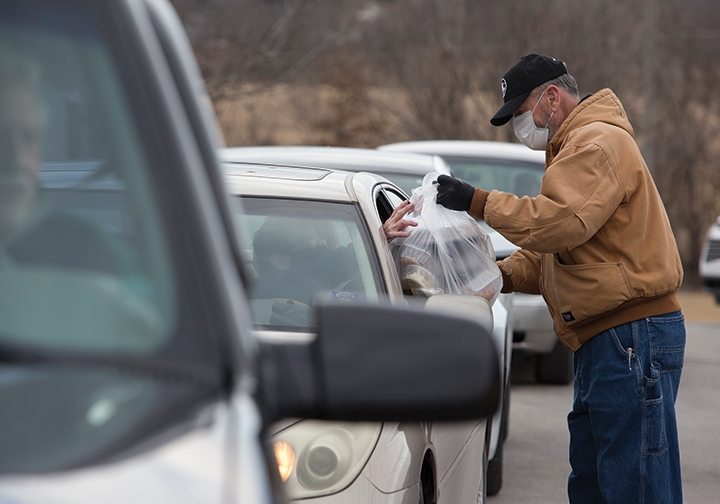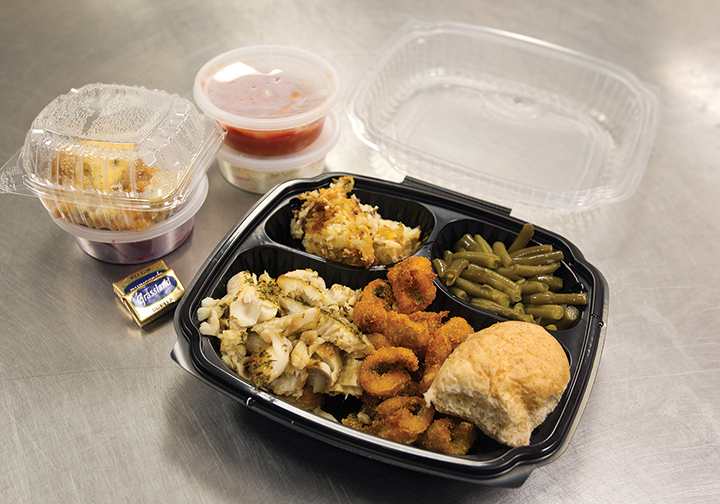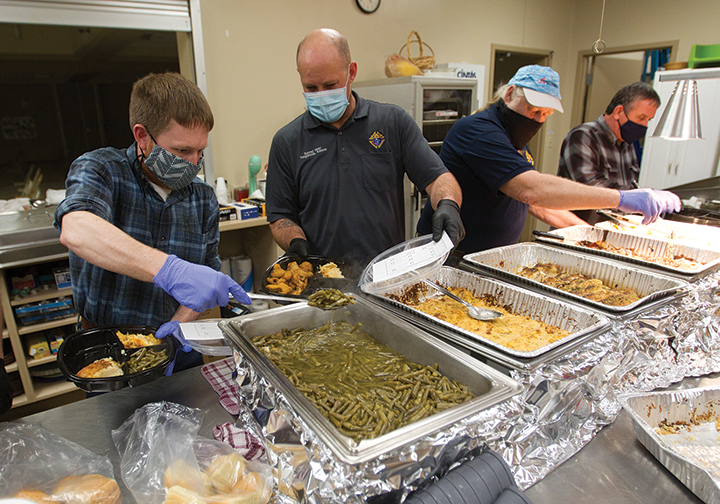
by Todd Habiger
todd.habiger@theleaven.org
KANSAS CITY, Kan. — The Lenten fish fry is alive and well, thank you very much.
With a pandemic still hanging over the country, most parishes decided to take their fish fries to the streets, offering curbside pickup, carryouts and deliveries only. If the first week is any indication, fish fries are still a roaring success.
“We were pleasantly surprised,” said Bryan Schmit, of Holy Angels Parish in Garnett. “We ended up serving around 325 people. The numbers were down a little bit, but 325 is still pretty respectable.”
The story was the same all across the archdiocese.
Return of the fish fry
At Sacred Heart Parish in Tonganoxie, Knights of Columbus organizers were caught off guard the first week with how popular their fish fry was.
“We didn’t really know what to expect, so we didn’t prepare nearly as much food in advance as we have in the past,” said Paul Haverkamp, one of the organizers. “So, we were playing catch-up most of the night.”

Haverkamp said that orders in the first week fell in line with what the fish fry has done in previous years.
At St. Michael the Archangel in Leawood, Mike Pollock, who manages the parish fish fry, said the early part of the evening was pretty hectic.
“The biggest challenge was just to figure out how to organize, plan and execute,” he said. “The first 30 minutes were a little bit challenging, but once we were able to properly position our workers, it went really smooth.”
St. Gregory Parish in Marysville reported a good turnout as well.
“With the pandemic, we didn’t know what to expect so it exceeded our expectations,” said Rob Peschel. “We served 257. Our average is usually around 270 so we were pretty close.”
St. Gregory offered carryout and delivery service. Both did brisk business. While most people chose the carryout option, the parish saw an uptick in the number of deliveries.
“We had about twice the number of deliveries that we had in past years,” Peschel said.

Going from a dine-in model to a mostly carryout and curbside model required some changes.
At St. Michael the Archangel, the parish simplified its menu, cutting back on the number of items it offers to make it easier on volunteers to move food faster.
At Holy Angels, where past meals were served as an all-you-can-eat buffet, the parish decided to cut prices on adult tickets with the move to carryout meals.
Sacred Heart went with a drive-in model for the first week, where a car would park in the parking lot and a volunteer would come take their order. With the fish fry being more popular than anticipated, some cars got lost in the shuffle, causing longer waits than necessary. For the second week, the parish switched to a drive-thru model, where cars would get in line and place their order. That proved to be much more successful.

And while some of the veterans of past fish fry teams chose not to volunteer this year because of safety concerns, organizers still found a way.
“We had a few of our older members that chose not to come in and help serve because they want to be cautious,” said Peschel. “The cool part about that was it gave us the opportunity to recruit some younger guys to fill in and help. So that was a positive thing.”
At each location, safety among workers and customers was paramount.
“Our number one goal was to practice safety and follow the guidelines that were out there,” said Pollock. “We tried to keep everybody safe. Sanitation was huge. Interactions were done with masks and distancing. These things were really reinforced throughout the evening.”
At Holy Angels, where customers had to come inside to pick up their order, safe practices were followed and enforced.
“The guys in the kitchen were wearing gloves, of course, and serving behind a Plexiglass shield,” said Schmit. “All the people that came had masks on.”
The social dilemma
Despite the success of the fish fries, the one thing that was missing was the social aspect of the dinners.
“You don’t have the camaraderie of the parish hall being full of people where you can go around and visit with them,” said Peschel. “You just didn’t have that kind of fellowship this year.”
Haverkamp agrees and thinks that one of the reasons Sacred Heart’s fish fry was so successful was that people were looking for an excuse to get out — just for a little bit. Still, he misses the social aspect.
“That is one of the biggest drawbacks,” he said. “You don’t get that face-to-face interaction.”

At a large parish like St. Michael the Archangel, Pollock felt differently. No, they didn’t have a parish hall full of people.
But for the 50 volunteers, the fish fry gave them the opportunity to be together and catch up.
“We did have a lot of camaraderie, because the people that were working hadn’t seen each other in a year,” he said.
In Garnett, Schmit felt that the fish fry gave people a brief respite from their isolation.
“I know the people in the parish appreciated us doing it,” he said. “It’s a good social event for the parish and the people. Even if they don’t get out much, at least they can see each other briefly and have a little bit of conversation, even if it’s just in passing.”
Pollock said he heard nothing but good things from those that took advantage of the fish fry.
“The feedback I received was outstanding — not that we didn’t make a mistake on a meal here or there. But people really appreciated the opportunity to get out and try something different,” he said.






